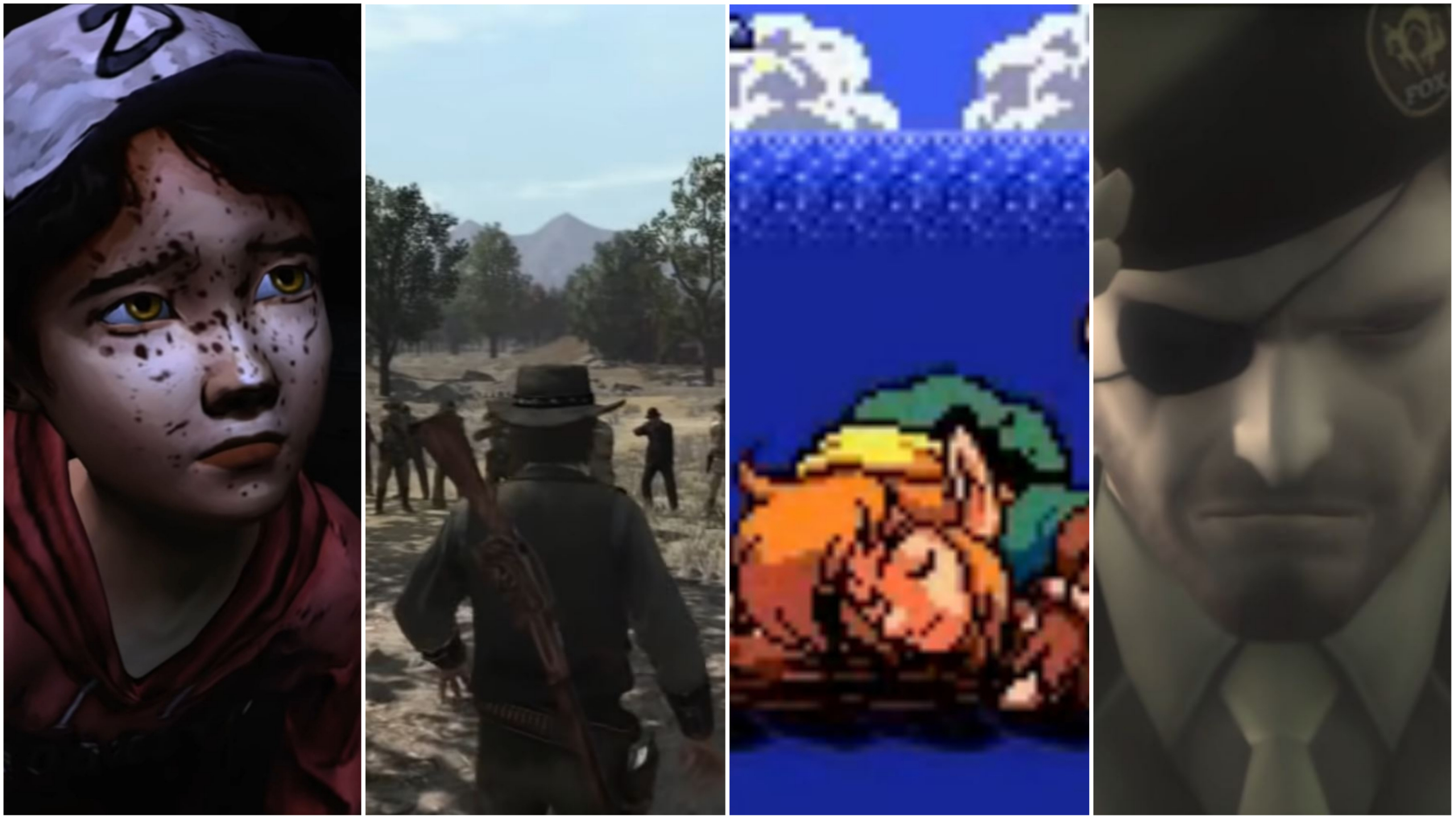Never forget how difficult it is to create a truly great video game ending. A truly great video game ending has to not only feel satisfying after hours and hours of play but somehow wrap up an adventure that everyone will have inevitably experienced at least slightly differently. A bad ending won’t necessarily ruin a great game, but it will always be that “asterisk” you go back to when you’re recalling your adventure. On the other hand, a truly great ending can not only solidify a game’s legacy but perhaps redeem whatever missteps that game may have made along the way.
We’re’ here today to celebrate those great endings. Truly great video game endings aren’t the anomaly they once were when the medium was young, but there’s still something of an elite group of video game endings that have raised the bar to a level we would have never previously dreamed of. Actually, some of those endings proudly stand shoulder-to-shoulder with the great endings in other mediums.
Before we dive into those endings, though, here are a few rules to keep in mind.
- A “one entry per franchise’ rule is in place for this list.
- If a video game had multiple endings, only one of those endings could be eligible for this list.
- These entries are not intended to be full ending explainers. While I try to offer as much context as possible, many of these endings are complicated and quite long. That said, these entries do obviously contain spoilers.
- There was no universal rule for what a video game “ending” consists of as some are naturally longer than others. Generally speaking, though, endings in this instance represent the finale of a game’s story rather than the best last levels. In some cases, though, interactive elements of those final levels did factor into the ending.
With that out of the way, here are 20 of the best video game endings ever.
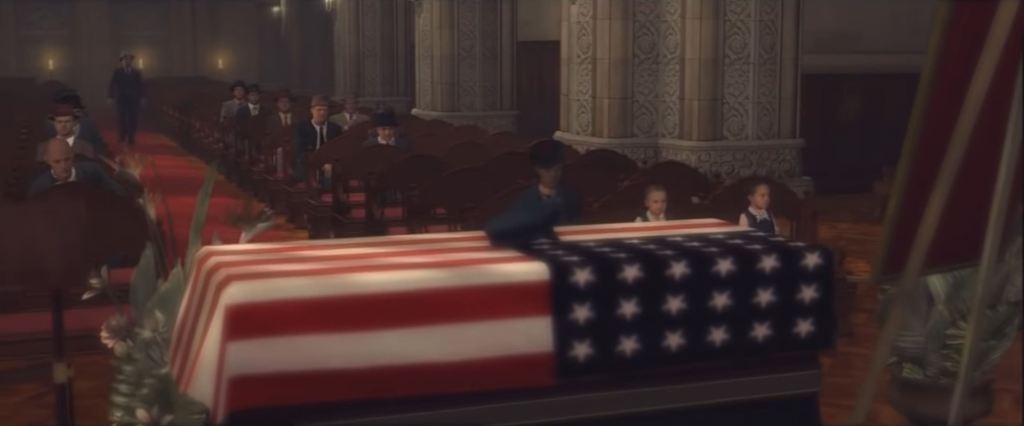
20. L.A. Noire
L.A. Noire’s final moments see Detective Phelps and his old Marine buddy Jack Kelso face off against Ira Hogeboom: a fellow Marine whose recent arson attacks may have been the result of Phelps’ decision to order him to torch a cave full of soldiers during the war. Phelps wants to arrest Hogeboom and bring a sense of closure to the arson cases and the corruption they represent. Kelso disagrees and thinks they should essentially put Hogeboom down. Kelso wins that particular argument, and Phelps is actually killed shortly thereafter while attempting to help Kelso escape the sewers. At Phelps’s funeral, we watch as corrupt cop Roy Earle delivers Phelp’s eulogy. Some criminals were brought to justice, but those with true power lived to see another day and shape the public narrative about what happened.
I know some gamers hate L.A. Noire’s ending, and I honestly understand why. Between the sudden change in the game’s protagonist that happens late into the adventure, the shocking death of the game’s previous main character, and the almost joyless final moments, it can be a lot to process. Yet, it really is something close to perfect in its own way. It’s not only that kind of bleak finale that helped define the most influential noir movies ever, but an ending that confirms that Phelps’ various character flaws were all intentionally implemented.
Phelp’s desire to go by the books, not open up about his personal past/pains, and refusal to see the truth about so many things all contributed to his death as well as the perpetuation of a societal cycle of violence, corruption, and injustice. He may have been the protagonist for much of L.A. Noire, but he’s as much of a victim of his own shortcomings as he was a hero.
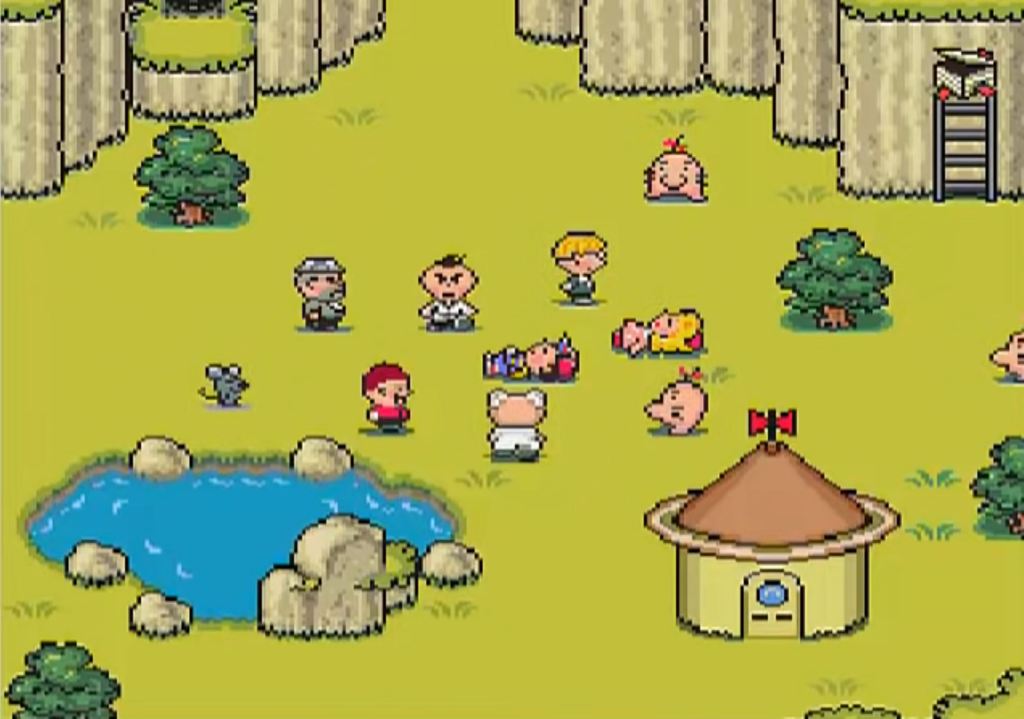
19. Earthbound
During Earthbound’s climactic battle against the entity known as Giygas, the player is required to “spam” a party member’s Prayer ability in order to summon the goodwill of all the people our heroes helped along the way. That goodwill is then weaponized into attacks that help you defeat Giygas. After a long battle, you’re finally transported back to your world. It’s then that you get to walk back through most of the places you visited, enjoy the good work you’ve done, say goodbye to your friends, and, finally, go home.
As simple as it may sound, there’s something truly magical about Earthbound essentially allowing you to play out events that most games would try to cram into a cinematic epilogue sequence. The way this ending recontextualizes the scope of your adventure and allows you to enjoy what you’ve done so far really allows you to appreciate what you’ve done and that it all meant something.
Honestly, though, it’s the sections involving your party members that really make this ending special. There’s something so wholesome yet heartbreaking about the idea of walking them home after saving the world together. Many of their lives are now better than they were before, but there’s a difference between seeing them return home during a cutscene and actually having to say goodbye. It’s such a humane and deeply personal way to say goodbye to a truly bizarre adventure.
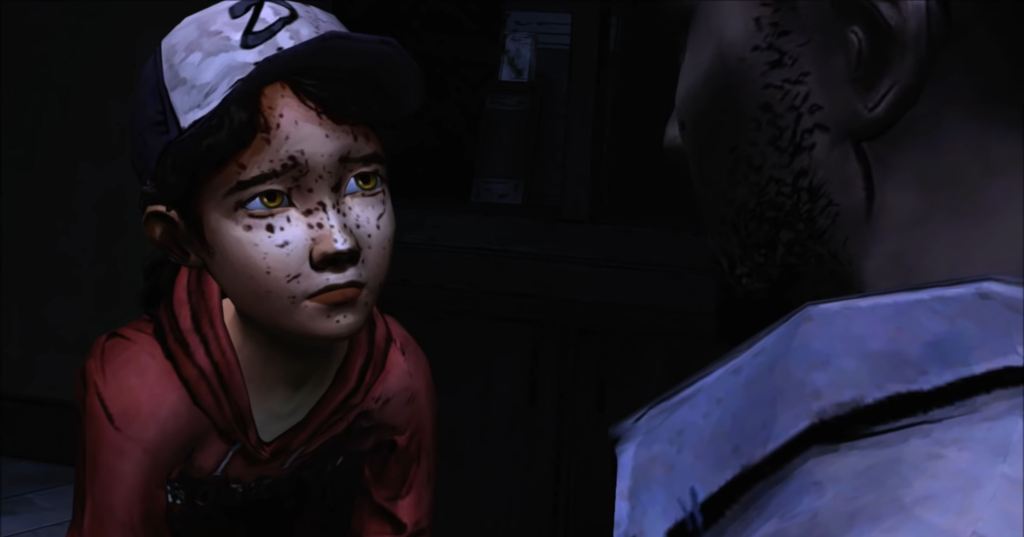
18. The Walking Dead Season One
After a twisting, multi-episode narrative filled with player choices, The Walking Dead Season One definitively ends with Lee essentially dying in Clementine’s arms. While the player gets to decide whether or not Clementine kills Lee before he turns, the damage is done either way. Clementine has lost her father figure, and Lee won’t live to get to help Clementine know some measure of peace, happiness, and love in a world that figures to become gradually crueler.
It’s honestly not that hard to write an ending that will make some people cry. What’s more impressive is to construct a tearful ending that feels truly earned. By the end of The Walking Dead Season One, you may very well cry. What I can assure you, though, is that you’ll be grappling with the same two questions that Clementine and Lee are undoubtedly thinking at that moment: “What could I have done differently?” and “What comes next?”
In a game filled with choices, it’s beyond cruel that there’s really nothing you can do to ensure that Lee and Clementine enjoy a happier ending. It’s heartbreaking to watch Lee and Clementine lose each other, but it’s worse to feel somehow responsible for everything and find yourself wishing you could do anything to rewind the whole adventure and find some way to appreciate the good moments and stop the bad ones.
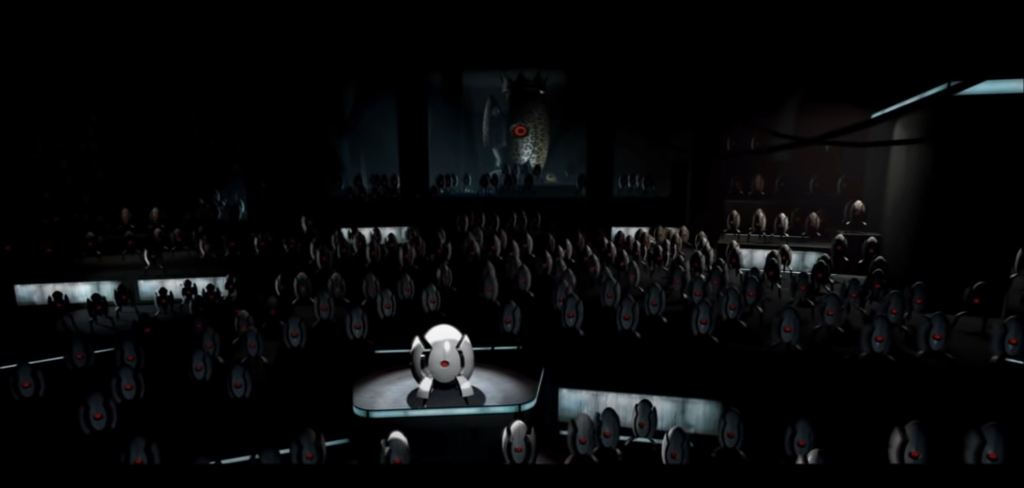
17. Portal 2
The final moments of Portal 2 see Chell (the player’s character) launch a portal on the moon and drag the corrupt construct Wheatley with her. During that struggle, GLaDOS manages to regain control of the facility just in time to send Wheatley into space and rescue Chell. GLaDOS then explains that they have learned about the value of humanity and have decided to set Chell free. Chell is then sent on an elevator ride out of the facility that comes complete with a chorus of attack drones conducting a symphony in her honor. Finally, Chell steps out of the facility and into a massive wheat field. As the screen starts to glitch out, Chell looks behind her and sees a beaten-up companion cube emerge from the escape hatch.
Like many of the endings on this list, Portal 2’s ending is subject to a reasonable amount of debate and interpretation. Elements of the game’s ending strongly suggest that not everything is as peaceful (or even real) as it may seem. Yet, this is one instance where I feel like the simplest explanation may also be the most satisfying.
As a kind of feel-good ending that also leaves you scratching your head, Portal 2’s finale simply works. It may lack the epic meme potential of Portal’s (also fantastic) finale, but there is a haunting beauty to the way that the game allows you to escape a nightmare scenario via a method that feels like it was orchestrated by a construct that is only just beginning to understand the basics of a happy ending. This ending just feels “right” despite the fact there is something about the whole thing that seems clearly wrong.
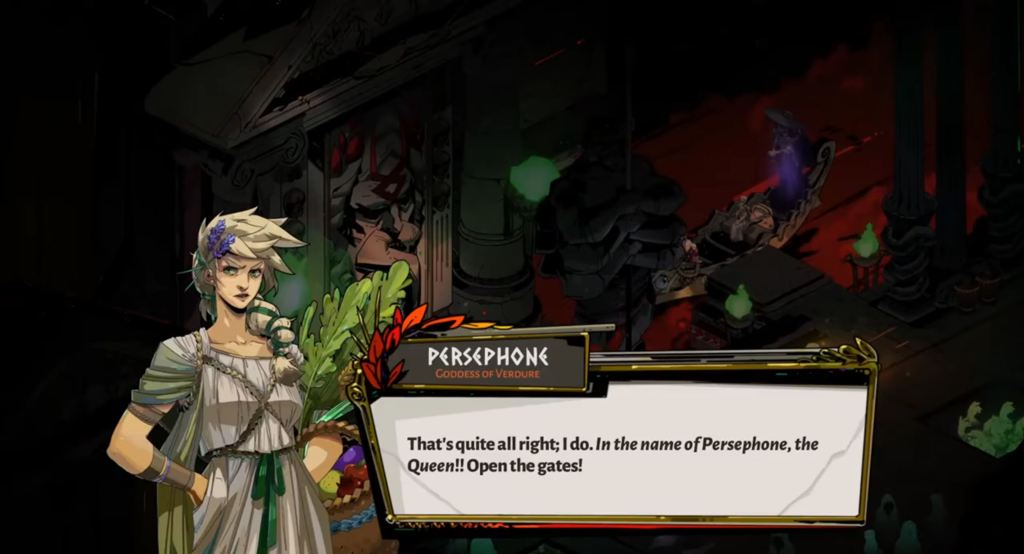
16. Hades (True Ending)
Hades’ “first” ending sees you defeat your dad, escape the Underworld, and finally meet your real mother, Persephone. Despite the fact that the game has clearly been building towards that reunion, your actual meeting with Persephone is cut brutally short once you realize that you are bound to the Underworld and can’t exist outside it for long. You’re then sent back to the beginning of your adventure (though you will retain much of the progress you’ve made along the way). From there, you can choose to escape the Underworld yet again, meet Persephone, and enjoy a few new dialog exchanges before you’re sent back to do it all again.
At that point, you’ll likely be convinced that you’re simply doomed to do that dance for eternity. However, something amazing happens on your 10th “run” through the game. That’s the run where Hades chooses to step aside rather than fight you, and Persephone agrees to return to the Underworld with you. From there, you’ll unlock a kind of epilogue section of the game that comes complete with new challenges and some truly emotional moments.
This is the kind of video game ending you really need to experience to fully appreciate. It not only feels like the perfect pay-off to everything that you’ve endured up until that point, but it expertly utilizes the “loop” nature of the game’s storytelling and gameplay. It’s such an incredible way to reward the player for their perseverance and patience.
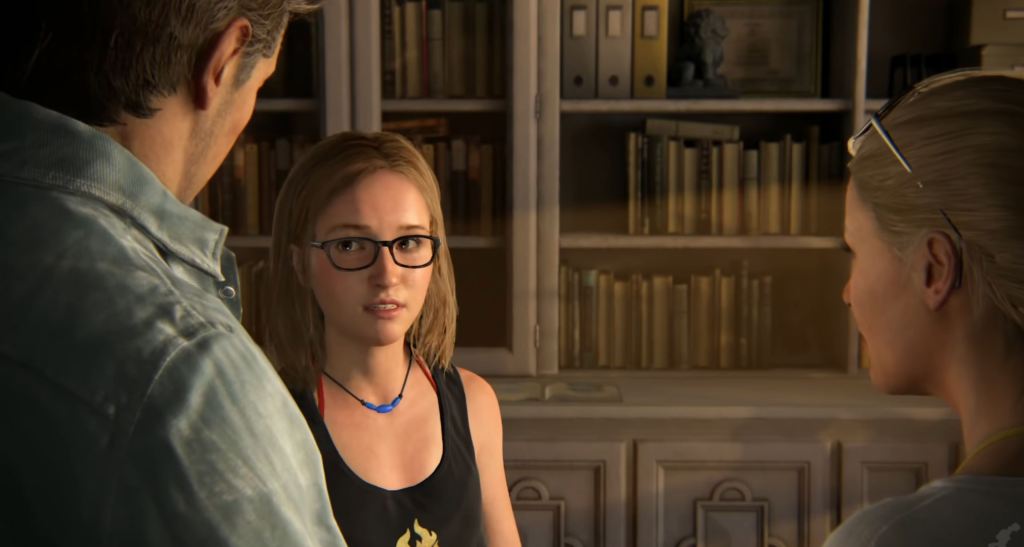
15. Uncharted 4
While Uncharted 4’s “wrap-up” moments are generally pretty brilliant, this section is really a tribute to Uncharted 4’s wonderful epilogue. That’s the part of the game that allows you to control Nate and Elena’s daughter (Cassie) as she plays Crash Bandicoot and browses the souvenirs of her parent’s various adventures. Eventually, she confronts her parents over the many things they haven’t told her, and we’re left to believe that Nate and Elena are about to share some fascinating family secrets.
I think it’s fair to say that a lot of people were caught off-guard by how emotionally invested they were in Uncharted 4’s story. While much of that surprise can be attributed to how good that story is, it really must be said that Uncharted 4 does an exceptional job of making you realize how invested you were in the franchise’s characters and how much you really want to see them find some kind of happy ending regardless of how much fun it is to see them in peril.
Too many happy endings in games can feel sappy, unearned, and strangely anti-climatic. Uncharted 4’s happy ending works because it somehow finds a way to make a quieter life feel like the most elusive treasure of all.
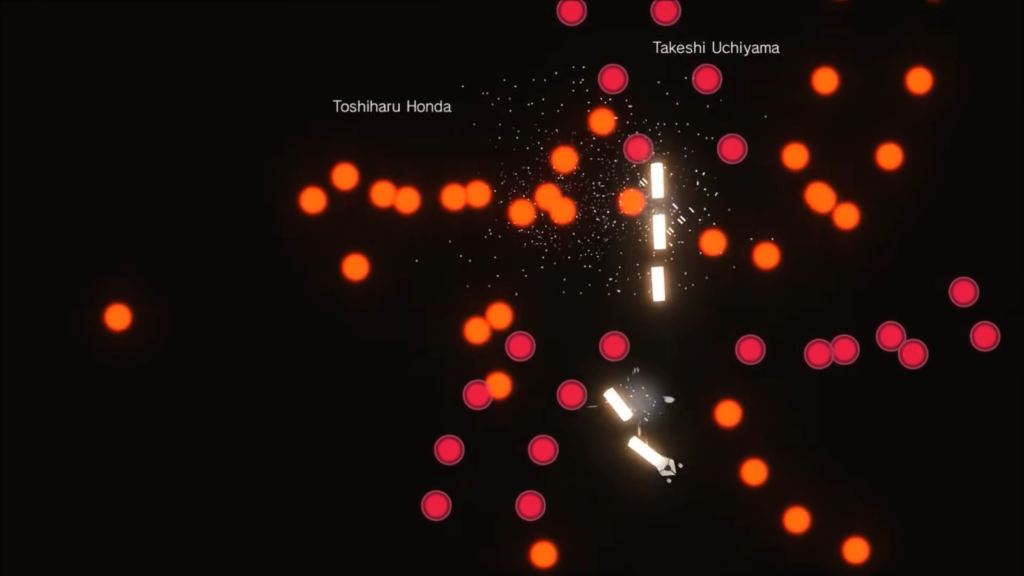
14. NieR Automata (Ending E)
It’s honestly incredibly difficult to offer any kind of brief explanation for the insanity that is NieR Automata’s “Ending E.” In the interest of keeping things relatively brief, though, it’s enough to know that this is the ending that asks you to sacrifice your save file, battle the game’s credits during a strange (and difficult) bullet hell shoot-em-up section, and potentially receive encouragement/assistance from other players who have reached that point before. It’s an absolutely wild piece of “meta” game design the likes of which you’ll struggle to find anywhere else.
While those meta gameplay and storytelling components typically dominate the conversation whenever this ending is discussed, it’s the way that those meta devices are so closely tied into NieR‘s narrative and lore that really makes them special. Ideas such as sacrifice and defying the gods which are so important throughout NieR Automata are also present in this ending. It’s just that they happened to be presented in a truly bizarre way.
There are many endings in NieR Automata, but there’s little doubt as to why this is often seen as the game’s “true” ending. It’s conceptually brilliant, incredibly emotional, truly unique, and the kind of ending that not only captures the importance of your journey but how special the whole thing really was.
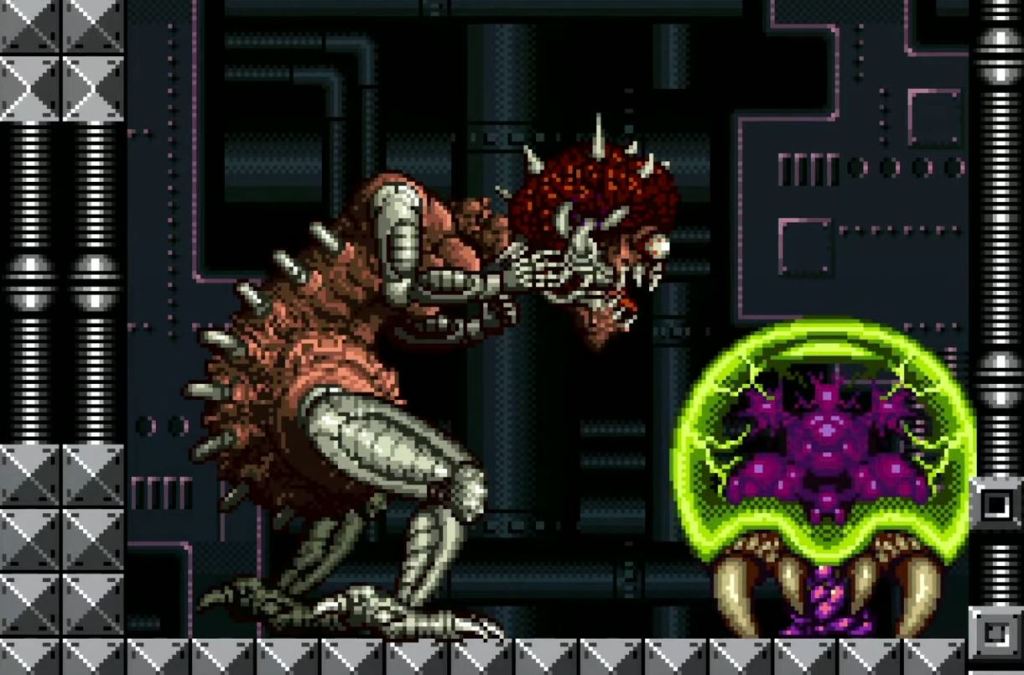
13. Super Metroid
Towards the end of Super Metroid, you’ll be confronted by a massive Metroid that nearly kills you. However, at the very last moment, it chooses to spare you. It’s then that you’ll realize that is actually the Metroid you rescued at the end of the first game. It seems that it has grown to view Samus as its “mother.”
Speaking of mothers, that Metroid appears again during your climactic battle against Mother Brain. This time, it intervenes on your behalf during that final boss fight and even fully restores your health. While Mother Brain tragically kills the Metroid soon thereafter, the Metroid manages to gift Samus the powerful Hyper Beam weapon right before its death. After using that weapon to finally kill Mother Brain, Samus triggers a self-destruct sequence and must escape Zebes before the whole planet is destroyed.
While that unbelievable callback to the first game obviously makes this ending work as well as it does, even those not familiar with the events of the original game will still feel the 16-bit gut-punch that this finale so perfectly delivers. The way those final moments so expertly blended long-term storytelling with immediate gameplay payoffs set a standard that developers would look back to for years to come.
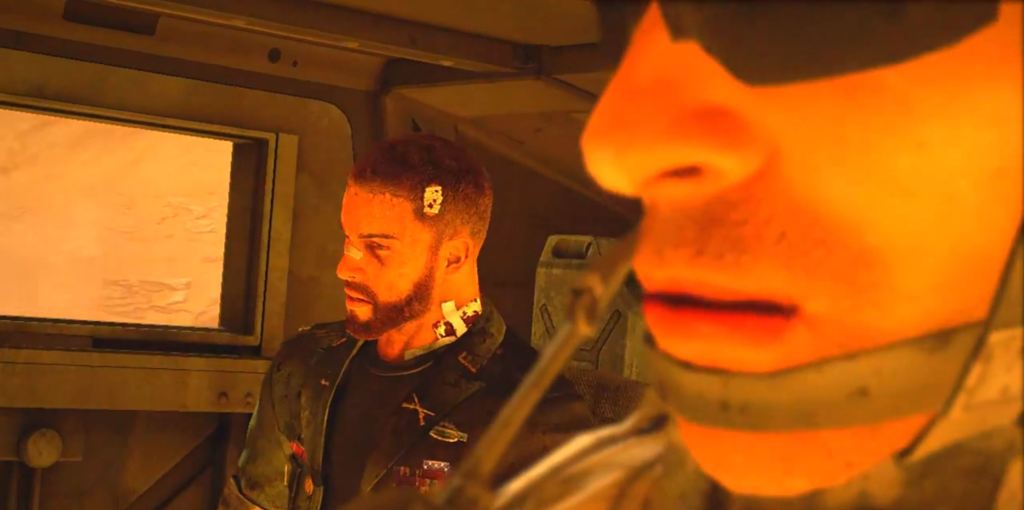
12. Spec Ops: The Line (Surrender Ending)
Spec Ops: The Line offers several compelling finales, but I find the game’s “Surrender” ending to be the most memorable. That’s the one that sees you shoot the image of Konrad in the mirror and elect to surrender your weapon to the approaching soldiers during the epilogue sequence. One of the soldiers will ask Walker how he survived all of this, to which Walker replies, “Who said I did?”
I’ve heard some say that they hate this game’s ending simply because they thought it was trying to suggest that the majority of the campaign’s events were some kind of dream or hallucination. However, that seems to be a very simplified read of what actually happens. While elements of this game’s conclusion are certainly subject to interpretation, I was always under the impression that it was trying to draw a line (no pun intended) between the atrocities Walker committed and how the hallucinations that were triggered by his mental trauma allowed him to temporarily cope with the many horrible things he had done.
That’s also why I find the surrender ending to be so fascinating. It’s the only ending that isn’t directly triggered by scenes of additional violence. On the one hand, it means that both Walker and the player are allowed to “escape” after having done so many terrible things. On the other hand, it’s a final chance for the player to realize that they don’t have to choose violence no matter how obvious of a solution it may appear to be.

11. Batman: Arkham City
Arkham City’s stunning finale sees Batman finally realize that Clayface has been posing as a healthy Joker all along while a very ill Joker has been trying to locate a Lazarus Pit. However, during a battle with Batman, Joker accidentally destroys the antidote he was seeking. Batman tells Joker he would have allowed him to use the antidote, but it’s too late for all of that. The Joker dies, and Batman carries him out into Arkham City before disappearing into the night.
We’ve seen countless stories about Batman and The Joker’s relationship, but the best ones usually find a way to make you question whether these two would really know what to do without each other and if they’re actually ready for the other to die. What makes this game’s ending so fascinating is that it allows us to really feel why Batman seems so conflicted about the idea of The Joker simply dying.
There’s a sense of tragedy to this ending that shouldn’t exist given that it revolves around a true monster’s death. It’s an operatic and elegant way to show why Batman feels the need to save people rather than simply kill them. Nobody around Batman in those final moments seems to understand why he’s carrying Joker, but in a strange way, we do.

10. Silent Hill 2 (In Water)
Like most of Silent Hill 2’s endings, In Water revolves around the idea that protagonist Harry Mason’s journey through Silent Hill represents the manifestation of his guilt over his wife’s death. What separates In Water from Silent Hill 2’s other endings is the fact that it’s the one ending that suggests James drowns himself in order to rejoin his wife and complete his journey for punishment/”redemption.”
While I think you could make an argument for any of Silent Hill 2’s endings (including the joke “Dog” ending) to grab a spot on this list, In Water really does feel like the most obvious candidate. It’s the ending that just seems to best match so many of the game’s greatest narrative themes, and it’s also the ending that many Silent Hill 2 players will naturally see first (which really fits the idea that the Silent Hill 2 ending you see is supposed to represent how you played the game).
More importantly, In Water has never really been as bleak as it initially seems. As others involved with the making of Silent Hill 2 have previously stated, there is a terrifying beauty to this ending that becomes more and more obvious the longer you sit with it. James’ suicide should not be glorified, but the way this game acknowledges and respects how that character arrived at that decision does pay respect to the victims of suicide in a mature and intelligent way that few other pieces of media have ever matched.
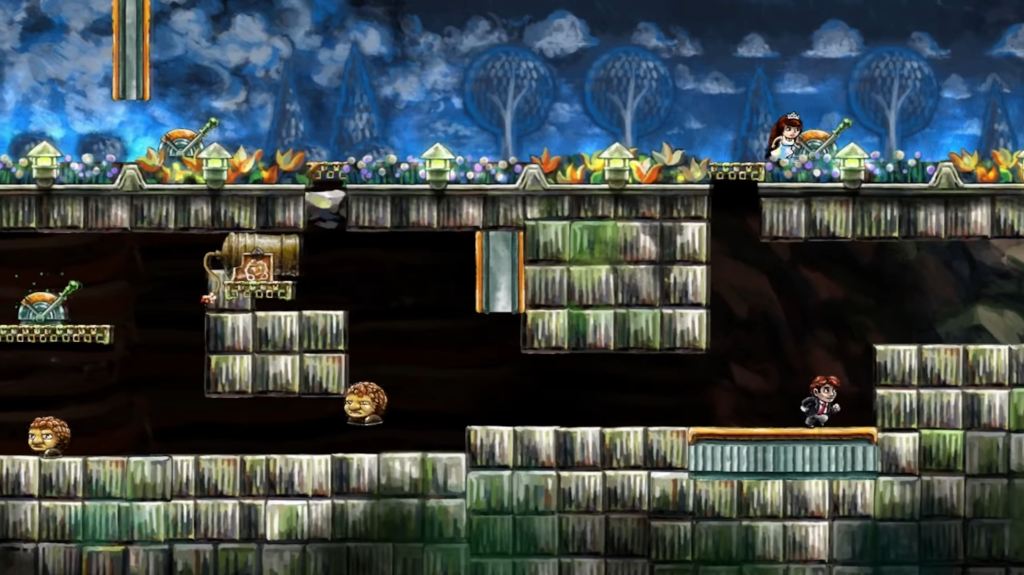
9. Braid
Throughout much of Braid, you’re left with the impression that your character is just a guy just trying to rescue a princess from a monster. During the game’s final level, though, you finally realize that the monster the princess is trying to escape is actually you. This whole time, you’ve been chasing someone who didn’t want to be rescued or perhaps should have never been pursued.
More often than not, Braid’s ending is seen as a sly bit of commentary on abusive relationships, toxic masculinity, or perhaps the ways that some men blind themselves from the monsters they really are. Interestingly, Braid’s creator, Jonathan Blow, has also suggested that the game is actually a metaphor for the creation of the atomic bomb and how people can so foolishly and whole-heartedly pursue their own demise under the belief that they’re doing something great.
However you choose to read it, Braid’s ending is simply brilliant. It turned an incredibly well-made platformer into one of the most complicated and compelling pieces of interactive storytelling ever assembled. It’s that rare kind of ending that drew a ton of acclaim when many of us first experienced it and has only become more powerful in the years since then.
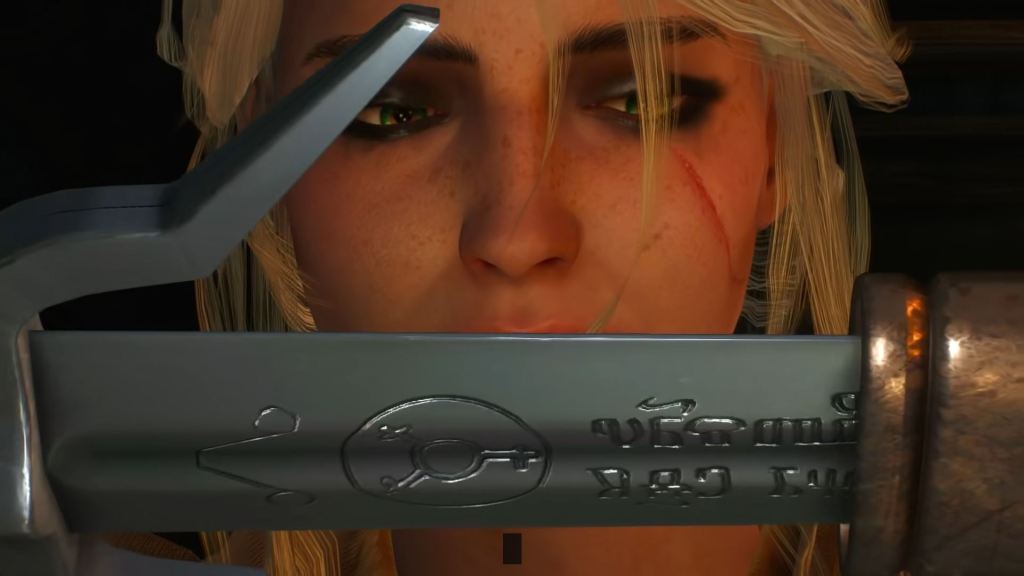
8. The Witcher 3 (Ciri Becomes a Witcher)
This is certainly the game that almost made me break my “one ending” rule. After all, there are about 36 possible endings to the base version of The Witcher 3, with many of the possible variations being based on what happens to some of the characters you meet along the way. Ultimately, though, your Witcher 3 ending is defined by what happens to Ciri. Depending on what you do, Ciri can live and become a Witcher, tragically die, or even become Empress.
It’s a tough call, but my nod goes to the “Witcher” ending. While there’s something to be said for the virtues of the ambiguous Empress ending and how it suggests that Ciri is best equipped to rule because she doesn’t want to, the promise of that ending requires a degree of optimism that is hard to logically come by. By comparison, the idea of Ciri and Geralt traveling the world together as Witchers is exactly the kind of conclusion that feels like the logical pay-off of having made every right decision along the way.
In any case, there really is something special about The Witcher 3’s approach to multiple endings. It’s a wonderful example of how to offer a player multiple conclusions without making them feel cheated or that the ending they saw isn’t the one they deserved.
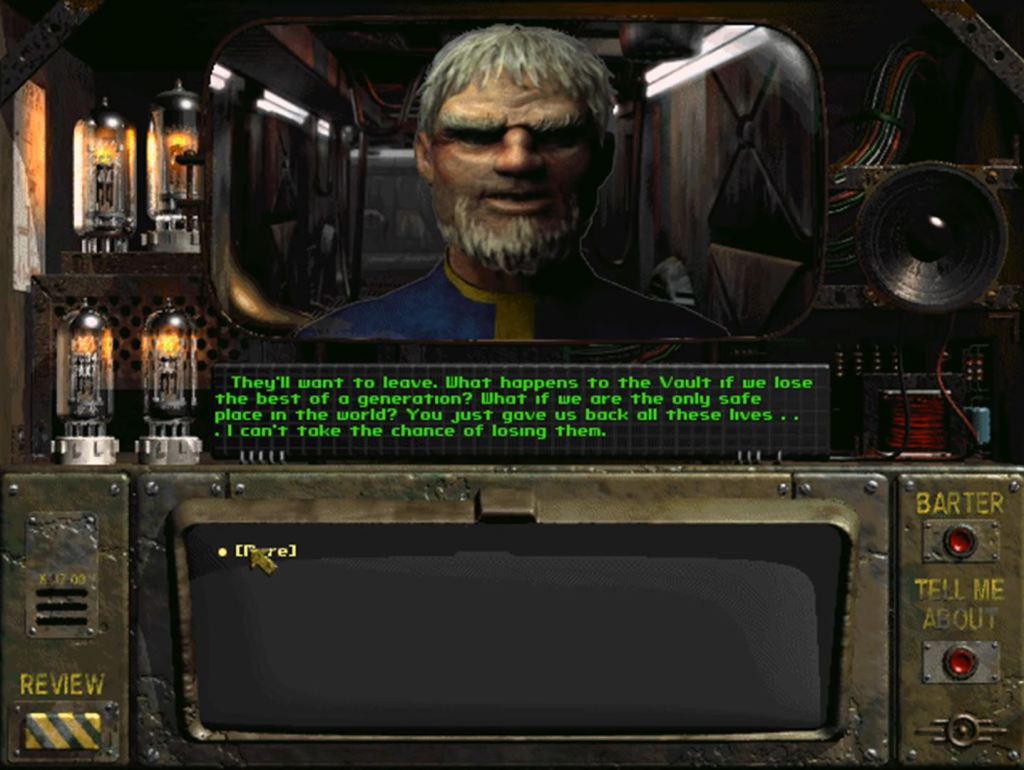
7. Fallout (Good Ending)
There are a few different ways that Fallout can end based on the decisions you make, but the game’s most heartbreaking and memorable finale is actually reserved for those who seemingly did everything “right.”
Manage to defeat The Master and secure the Water Chip, and you’ll finally return home to Vault 13. It’s then that the Vault Overseer will tell you that he’s grateful for everything that you’ve done, but he can’t allow you to return to your life in the vault. While he seems somewhat concerned that your adventures in the Wasteland might have left you contaminated, he’s more concerned with the idea that your mere presence might inspire others to leave the vault and go back into the world. He believed he was sending you on a suicide mission, and he isn’t willing to risk the consequences of your existence.
While this is undoubtedly a dark ending, there’s a strange logic to it that you kind of have to respect. You may have set out to save the people in the vault, but can you really imagine simply living the rest of your life in it after everything you’ve seen and done? Fallout 2 actually pays this ending off in an incredible way, but even taken on its own, it’s an appropriate, devastating, and certainly memorable conclusion to an all-time great game.
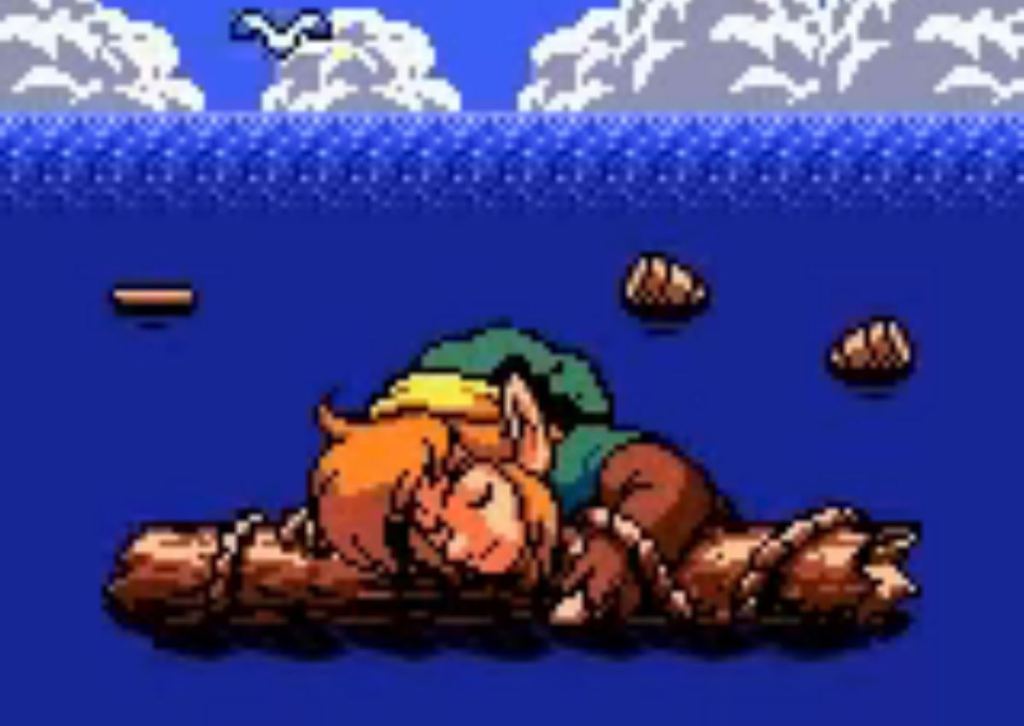
6. The Legend of Zelda: Link’s Awakening
By the end of Link’s Awakening, Link comes to realize that Koholint Island is essentially a figment of his imagination and that there are few (if any) people he can really save in this elaborate nightmare. As the game ends and we see Link floating out in the middle of the ocean, we’re left to wonder about the answer to so many questions. How much of this adventure “really” happened? Is Link dead? If those events didn’t happen in the real world, then why do they still matter so much to us?
While Link’s Awakening’s alternate ending and some of the game’s supplementary material offer some potential answers to those questions, this is one of those cases where the answers matter less than the questions. At a time when the most anyone was expecting from a handheld Zelda game was a reasonable approximation of a console Zelda game, Link’s Awakening instead offered an ambitious and ambiguous adventure. With few possible exceptions, this is one of the only major Nintendo adventures that doesn’t offer a clear answer regarding whether or not you really saved the day.
Link’s Awakening’s ending is brilliant enough on its own, but it’s that pedigree that puts it over the top. We’re trained to expect just about anything from a Zelda game, but we’re certainly not expecting an ending that the reality and morality of our existence. Link’s Awakening is a great Zelda game no matter how you look at it, but the game’s ending put it on another level.
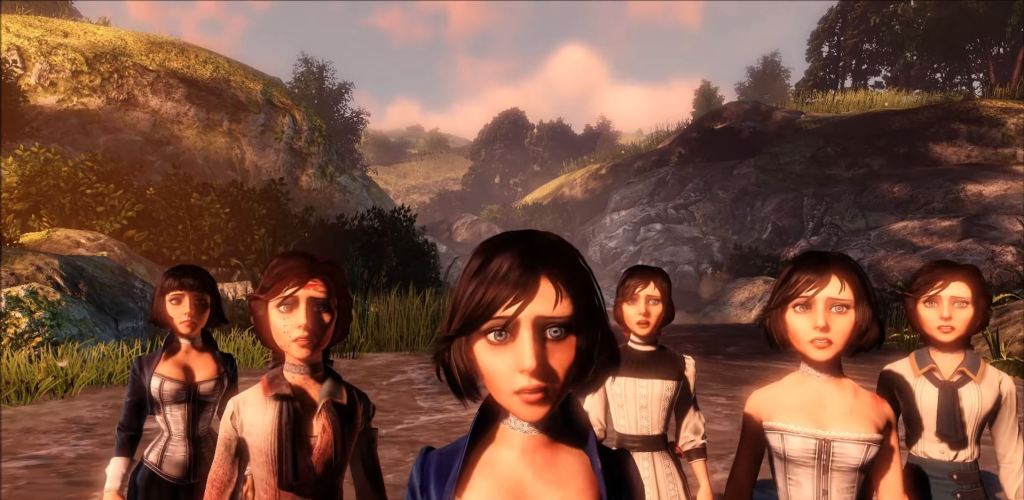
5. BioShock Infinite
There are a few “headlines” that have rightfully come to define BioShock Infinite’s ending. “There’s always a lighthouse. There’s always a man. There’s always a city,” the revelation that Booker is Comstock, the glimpses of Rapture…these are the lines and ideas that are often first mentioned whenever BioShock Infinite’s maddening multiverse ending is discussed and debated.
What so often gets lost in that condensed version of the conversation is the journey that leads you to those shocking revelations. For every seemingly simple meta-based revelation that BioShock Infinite’s ending offers about the journey so far, it inspires a hundred more questions. What was the real purpose of your mission to “Bring us the girl and wipe away the debt?” Did you accomplish anything along the way? Were you always a villain mistakenly identified as the hero, or was there somehow a world where you could have been the savior you fancied yourself to be?
BioShock’s ending has that famous “Would you kindly?” twist that we’ll never forget, but I’d argue that BioShock Infinite features a more compelling version of a similar idea. It not only brings up the idea that our actions aren’t entirely bound by choice but introduces a multiverse structure where the meaning and value of a few key constants are left for us to decipher. Not everyone loves BioShock Infinite’s many bold choices, but it’s hard to deny the power of its ending.
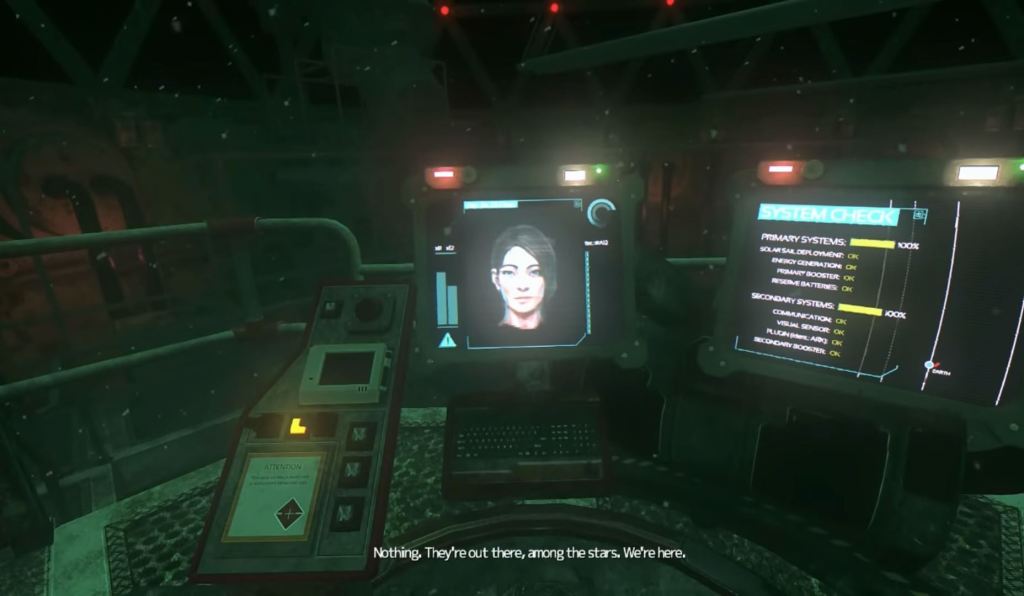
4. SOMA
By the end of SOMA, you realize that the Earth was destroyed years ago, you are just a clone of your original self (or a clone of a clone by that point, really), and that your consciousness can be determined by a “coin flip” procedure that dictates which mind goes into which physical body (or other receptacles). The whole thing culminates in the player’s decision to try to upload all remaining human consciousness into a spaceship known as the ARK that might just be able to preserve whatever hope for humanity remains. In a stunning turn of events, though, the player realizes that their consciousness was not uploaded into the ARK as they intended. They lost the coin flip, and their consciousness must remain behind in a doomed world. What happens next is not entirely clear.
That’s a gross oversimplification of what happens in SOMA, but it’s hard to really capture the full weight of that moment in just a few words. Throughout most of SOMA, you’re encouraged to believe that you are somehow special. You win an earlier coin toss, and you’re certain that your consciousness will always be the one that “lives” on. Instead, you end up losing in a pretty big way. As the player character begins to curse and scream over their misunderstanding, we understand his pain. Perhaps he did the right thing, but he won’t be able to directly enjoy the benefits of his decision. Instead, he’s been left alone (mostly) in an absolute hellscape with the knowledge that his “existence” is both painfully real and also somewhat irrelevant.
While some details of SOMA’s ending start to fall apart just a bit if you dive into them too deeply, the whole thing absolutely works on a visceral level. It’s a terrifying and intelligent way to end a terrifying and intelligent game. It’s the kind of ending you’ll never forget, and it’s the kind of ending that is worthy of being endlessly debated, dissected, and discussed.
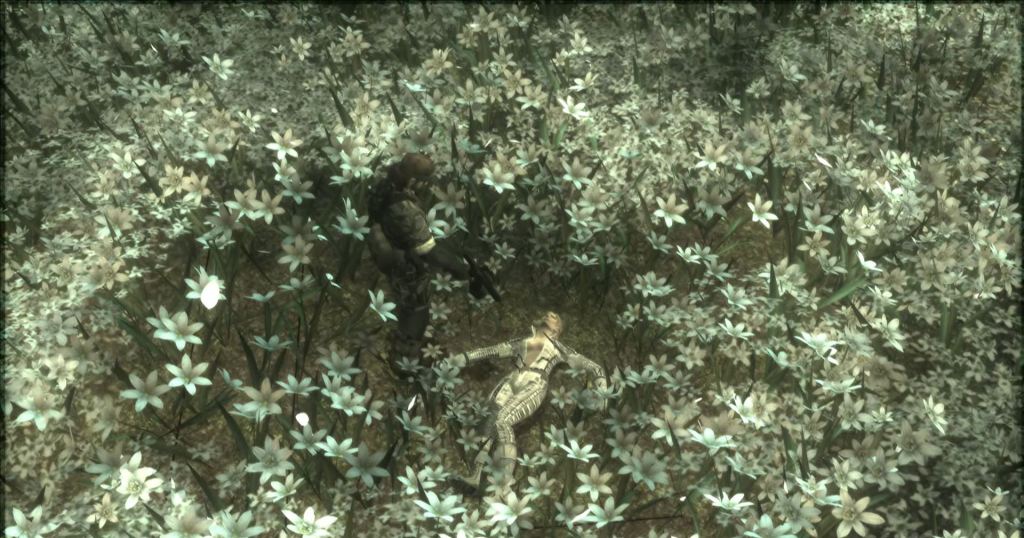
3. Metal Gear Solid 3: Snake Eater
Like most of Hideo Kojima’s endings, Metal Gear Solid 3‘s finale is long, complicated, and subject to interpretation. Yet, this particular ending will rightfully be remembered for the moment when players realize the game expects them to shoot The Boss as she lies in a field of white flowers. That already powerful moment is perfectly punctuated by the game’s powerful score and the decision to turn every flower in that field blood red.
To be honest, you could make an argument for any of the Metal Gear Solid endings to appear on this list. They’re all wonderfully complex conclusions filled with political intrigue, great character moments, unexpected payoffs, and truly epic cinematic construction. MGS 3 certainly features all of those things.
What really makes this particular ending so special, though, is that moment you shoot The Boss. It’s that kind of powerfully personal (and intelligently interactive) moment that even some of the other great MGS endings sadly lack. Even if you don’t quite follow all of the political twists and turns that follow, you will fill the impact of that moment. It’s the moment that shows how Kojima (much like director David Lynch) truly understands and appreciates the heart at the center of his stories no matter how “weird” they get.
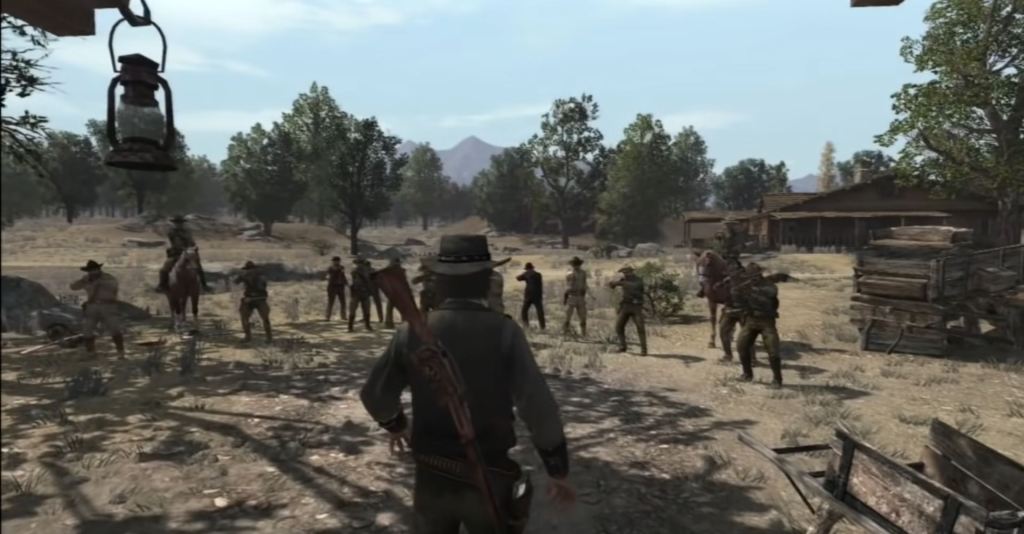
2. Red Dead Redemption
To me, Red Dead Redemption’s ending properly begins as you ride home while the song “Compass” plays. After everything you’ve been through, you finally get to see your family again and even participate in a few homestead missions that allow you to reconnect with your wife and son. Your seemingly peaceful existence is then shattered by the return of Edgar Ross who has summoned a posse determined to bring John Marston to “justice.” While a unique interactive standoff sequence allows you to kill a few of Ross’ men, there is no way to survive the encounter. In a stunning epilogue sequence, you’re allowed to control an older version of John’s son, Jack, who soon tracks down Ross and murders him to get revenge for his father.
Thematically, this ending does an amazing job of capturing how difficult it is to escape the circle of violence. More importantly, though, this ending lets you properly experience those incredible moments in ways that only a video game allows for. You get to play out a few precious moments of a more peaceful life, you get to try to survive an impossible fight, and you get to choose to seek revenge. Any of those moments could have been handled via a cutscene, but Red Dead Redemption lets you carry out and really feel all of them.
While Red Dead Redemption 2’s ending is also pretty great, there’s just something about the way this ending manages to feel so complete and satisfying while still being a real heartbreaker that just can’t be topped.
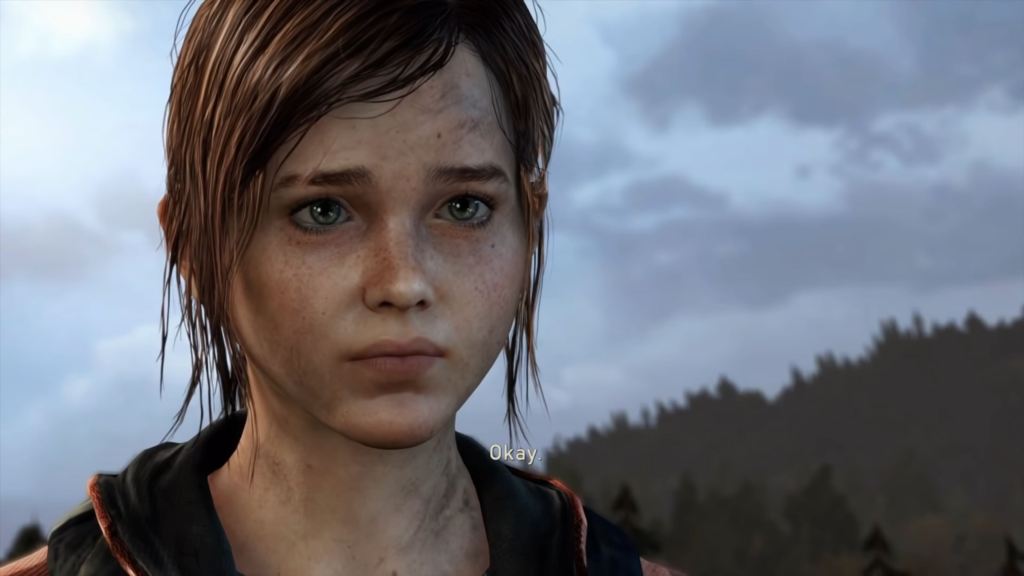
1. The Last of Us
By the end of The Last of Us, we’ve seen Joel and Ellie suffer through every horror imaginable in order to reach a Firefly hospital and potentially find a cure for the infection that has triggered the apocalypse. However, Joel soon learns that the Fireflies believe the only hope for finding a cure involves killing and dissecting Ellie. Unable to deal with the thought of losing Ellie, Joel kills the Firefly doctors, takes Ellie, and escapes the hospital. As the pair head back into the world, Ellie asks Joel to swear to her that there was nothing the Fireflies could have done to use Ellie to find a cure. Joel swears it is true, and a distraught Ellie simply mutters, “Ok.”
There is a power to this ending that few endings in any medium could ever hope to match. Honestly, I kind of worry about the person who knows exactly how to feel by the time the credits roll on this game. “Ambiguous” doesn’t begin to cut it. This is the kind of ending that forces you to realign your moral compass and come to terms with what you would do in a situation where preserving the one thing you love conflicts with giving everyone else a chance at something better (no matter how small or unlikely). It’s as easy to condemn Joel for his heinous actions as it is to completely understand them. It’s easy to see Joel as Ellie does: as a villain, as a father, and as a human who represents everything good and bad about what she wants to save.
I’ve seen some argue that The Last of Us Part 2 offering any answer to the question “What happens next?” dilutes this ending’s power somewhat, and I completely understand that view. For me, though, this ending has never stopped feeling like a punch to the gut. It’s a big part of the reason why The Last of Us is one of gaming’s few generally agreed-upon narrative masterpieces.
